Welcome
Timeline
Census
Reference
~
~
Contact Beth Northrop
ejnorth123 AT juno.com |
Jennings are everywhere in Fairfield and Southport, Connecticut. Growing up we probably knew more about our family history than
most, but there's still more to know about our branch of the Jennings family.
Lewis Burr Jennings
A wonderful picture of life with mention of Lewis Jennings
Early Recollections of Fairfield Life
By: William Burr
1920
from Rays Place Ray's Place
I WAS born into this world sometime during the day May 29th, 1831 to battle with the ups and downs, sorrows and joys of life up to my present age 82 years. I have seen marvelous changes during my life in many ways. In the ways of living farmers produced everything that they consumed. Sheep were raised on the farm, the wool was spun and woven into cloth and yarn in the home of the family. In the family also the meat was consumed or exchanged with the neighbors, there were no meat markets or butchers' wagons going around. Many of the garments we wore were made of the flax grown on the farm, spun and woven in the house. There were no friction matches to start the fires. The only way was to take a piece of steel and flint and strike them together and produce a spark of fire to drip into some lint in a tin box. It often took considerable time and patience to get a fire. Oftentimes one would go to the neighbors and borrow some fire, tho very seldom they got the fires that way. In my early days the cooking and some of the baking was done in the open fireplaces. At bedtime the coals of fire were buried in the ashes and kept alive until morning. Of course there were no incendiary fires in those days as it was too much trouble and the clinking of the steel and flint made too much noise.
In those days there was not much style, but oul footwear was strong and enduring and waterproof. The shoemaker went from house to house and made up all the family shoes, also the tailor did the same making the clothes for the family from the wool. There was more or less beef slaughtered in the winter. What was not consumed fresh was salted down for the spring and summer months. The hides were taken to the tannery to be made into leather to be used for the family shoes.
The baking was done in brick ovens which would be full of bread and pies. The families were all large, both the rich and people in ordinary circumstances had large families. Of course money was very scarce. I was as well pleased to get one cent in my stocking Christmas morning as children nowadays are to get five dollars. A great deal that was produced on the farm such as butter and eggs had to be bartered away for dry goods and family supplies,. butter about twelve to sixteen cents a pound and eggs ditto. Many a one parting with a silver dollar would squeeze it so hard the eagle would holler, or parting with a silver half-dollar, the Goddess of Liberty would turn pale because it had to change hands.
The first of my remembrance was when I was about three years old I was taken over to Grandmother Burr's on a home-made sled (no other sleds were used in those days). I was put into a corn basket together with another brother or sister and Father drew us over on the snow. Good old Grandma was glad to see her grandchildren. She had forty-nine of them and all but four were born before she died, they were my brother and three sisters. She was a very ambitious, heroic woman. When the town was burned by the British, after throwing her pewter dishes consisting of plates, platters and spoons down into the well, she mounted her horse with her first born child Thaddeus, nine months old in her arms, went down to Sasconeck, now called Sasco Hill, and got all their cattle out of the pasture and drove them up into the town of Easton so the British army couldn't get them. She then returned home to find all her house and barns burned up. There was a small house in back that was not burned and they lived in that for two years until they built up again. She had five grandsons born in one year that she thought a great deal of. Their names were John Morehouse, Morris Lyon, Lewis Jennings, Henry S. Burr and my brother David Burr.
In those days of my youth there were no railroads or steamboats. The only way from New York to Boston was by stage coach. There was a steamboat that went to New York from Norwalk long before any boat went from Bridgeport. Stage coaches carried passengers from Bridgeport to Norwalk to go by boat to New York. Also one from Fairfield owned by George Sherman, grandfather of Mrs. Oliver Turney.
The only light we had to light our houses to read or work by were tallow candles, oftentimes only one on a table for the whole family to read by or to study their school lessons by. Finally sperm oil became very popular, then followed kerosene, then gas and electricity.
The people were very religious. The church held two services every Sunday, morning and afternoon and prayer meeting in the lower room of the old academy in the evening. I often attended all three services and saw some of the gentler sex home. Every person attended the services, both old and young, coming from Black Rock, Morehousetown and Holland Heights in all sorts of vehicles, same on horseback. One old bachelor coming from Mill Hill on horseback one evening, getting his horse ready to go home, found the horse's tail had been cut. It was supposed a certain lady had committed the act.
I remember well such men as Capt. Gould Jennings, my uncle, a noble looking man walking with his foot stove in his hand to keep his own and his family's feet warm and also Judge Sherman and his wife coming to church with their stoves in their hands. The church was very cold, there was but one stove in the church, that was a box wood stove. It stood in the aisle near the pulpit. It was so hot you couldn't get near it. The pews on each side of the aisle were lined up with tin to prevent fire. The pulpit was elevated some fifteen feet and under the pulpit the library for the Sabbath school was kept. Dr. Atwater was the first minister I remember, he too, had a large family, mostly boys. On one occasion his wife could not make one of them behave as he ought to in the house of worship, so the minister took him up into the pulpit. As the father was proclaiming the doctrine of the Bible in an earnest manner to his people, on looking around he saw his boy sitting astride of the rail of the pulpit. The church andSunday,like everything else has changed. I cannot say it has changed for the better. The population of the world today is not as honest as when I was young. Sunday was very strictly observed by everyone whether church members or not. It commenced Saturday night at sundown and continued till sundown Sunday night and then the repairing and the week's mending was done. I remember well my father's sisters, Aunt Sturges, Aunt Esther Morehouse, Aunt Abby Lyon, Aunt Mary Burr would come in Sunday evenings and bring their knitting work and spend the evening, all living close by father.
Fairfield had three churches - Congregational, Episcopal and Methodist. Bridgeport at that time only had four-one a Catholic. On one Sunday I walked to Bridgeport and went to all the churches including the Catholic, got my dinner at the Franklin Hotel.
Bridgeport at that time was in its infancy, all of the business including dry goods houses was in Water Street. One night a fire swept through Water Street and burned up the dry goods houses. After that the dry goods houses or stores were built on Main street. Several of the old folks thought they were making a mistake to build there. Fairfield avenue was then called Beaver street, and Park avenue was called Mutton Lane. A man by the name of Beach had a dry goods store on Main street, now owned by Miss Annie B. Jennings which was patronized largely by Bridgeport citizens.
In those days Fairfield was a shire town, the Court House was located here. Court commenced their session on Monday afternoon and continued until Saturday noon and then the lawyers would leave for their homes. Booth from Danbury and Belding from Newtown came and went on horseback. There were but a very few lawyers in those days. I remember them all, Hawley of Stamford, Bissell of Norwalk, Chamberlain of Westport and but one from Bridgeport, a Mr. Dutton. He moved to New Haven and after that he became Governor of Connecticut. There were more lawyers in Fairfield, five or six of them. There was but one doctor in Bridgeport, a Dr. Nash.
There were several families of colored people living in Fairfield, a good, respectable class of citizens. Their names were the same as the old descendants, namely: Sherwoods, Judsons, Burrs, Malby, Husted, Hyde, Sanford and others. I do not know whether any of them were slaves or not, if not they were descendants of slaves, as Connecticut was a slave state. The white people gave them their freedom and some of them were given a plot of land to build a home on. Primus Burr's home was where Edward Randolf now lives. He was a great builder of stone walls. He built most of the stone fences around here. It was said he was a great lover of black snakes and ate their hearts and livers. He was buried on his homestead beside a stone wall that I own now. It is said that when he was lowered into his grave the black snakes ran their heads out of the wall and looked down into his grave. In those days, or my early days, snakes of all kinds like the birds of the air were more plentiful than they are now. I well remember seeing nine black snakes just after shedding their skins (which they do once a year) all curled up shining like glass bottles at the edge of some bushes near his grave.
It was a State law to have two days in the year set apart for men to have military practice, in case of war they would have some knowledge of military or arms work.
The first Monday in May and September was set apart for the drilling days. Of course all of the young boys and girls looked forward to those days of having a good time hearing the music, which was the beating of the drums and the marching and maneuvering of the men with their guns which were flint lock make, which was composed of a piece of steel and flint striking together, producing a spark, lighting some powder and off goes the musket and often it did not discharge. We young folks had a grand good time those days. I must not forget Uncle Kit and Aunt Dinah, colored folks formerly with Mr. Samuel Rowland. They furnished root beer and cakes or cookies on those days from the meeting house steps, beer three cents a glass and cookies one cent each and they were good. I don't think I have eaten any so good since. There was an Indian named Zike Pair, came from Bridgeport on all training days with his bow and arrows. He would stick a small stick in the ground with a split on the top and the people would put a cent in the split, he would stand off about thirty feet, fire his arrow, he was sure to hit the stick or cent (as they were called those days) and fall it to the ground; of course he claimed the cent. He got a great deal of money in the course of the day and it made a great deal of sport for old and young. He was the only Indian around that I knew of. Later in the fall there was a general training, all of the companies from every town in the county were ordered to drill in some one of the towns three days in succession. There was an immense gathering of the inhabitants to see all of the soldiers. Mrs. Maria Kelley's father was a General of all the companies in the County. Fairfield had two companies,theold and one new called the Frank; they wore handsome blue suits, hats with red feathers on them; they made a full showing. Burr Osborne on Osborn Hill was Captain of the Company. At one time they all carried flint lock muskets, the old Company wore any kind of clothes, were not dressed up much. A good many of them liked their Santa Cruz Rum very well so their legs got tangled pretty well. The training day furnished great amusement for the spectators, one could see their sweethearts hanging on the fellows and taking in the sights and amusements. There was a big Northeast gale, the line storm in September 1816, it changed the whole coast of Rhode Island and Connecticut, it drove the beach inland on the salt meadow four hundred feet or more. It stopped the travel from Boston to New York one week, on account of the trees being blown down across the highway. I often heard it spoken of when I was young, the same as we hear of the blizzard of 1888. It was a common expression years ago to hear of such a one or such an animal as "he is as poor as a church mouse." A little explanation why that phrase was used. When young there were more or less mice running about in the church during servicetime, they were poor squaney-looking mice who did not get anything to eat only Sundays. Of course, there were a great many of the congregation that came a long distance from the church, they brought their lunch or dinners with them as they stayed through the Sunday school services and afternoon service. In eating their dinners there were more or less crumbs dropped on the floor, the mice then got their only meal for the week. All the pews had footstools in them not only for foot rests but to keep the mice from running up their legs. Occasionally one would, generally the whole congregation heard of it.
In my young days the minister's salary was small and always in the winter the Parish gave them a donation party. They always got quite a coritribution of various articles all useful in the family such as farm produce, groceries of all kinds, the farmers brought several cords of wood. They did not have any coal in those days, and then the men would go at some time and cut it up. They called it a sawing and cutting bee, the ladies would go and prepare a dinner for the men, the minister would join in and help, we would have a good picnic time.
Many times the doctors had a donation to help them along as they did not have the practice as they do now days. Anything the matter now they go to a doctor or druggist; in those days every head of a family was its own doctor, mostly done with herbs of different kinds. They were always kept in the attic on the galaspate and collected fresh every year. I will name some of them: wild hyick, golden rod, boneset, catmint, pennyroyal, tansy, wormwood, stinkweed, elderbiows, blosenes, and many others, all were used for different complaints, consequently the doctor did not have the practice, his was a starving practice.
In those days there were no steel pens, all writing was done with goose quills, all the school teachers had sharpened them or made them for the scholars. I can see now Judge Sherman sitting at his desk sharpening his quill pens. My first schooling was in the old bellows factory. My cousin Esther Lyon was the teacher. I remember at one time I suppose I was doing something I ought not to be doing which did not please her, she tied me up to the table leg. She sat beside it writing copy for the children. I drew the table away from her and the ink stand went off into her lap onto the floor. I got a double dose for that operation. The teachers had to write all of the copies for the children to write by; they had to teach six hours a day, five and one-halt days a week, 48 weeks in a year; there was nothing said about pensioning teachers in those days. They never got over $25.00 a month. The houses were of one style all over the town, all had a long kitchen, with a bedroom on the end of it. The kitchens among the farmers were used as a workshop, dining room and cooking room; also the large and small reel was located in it for the spinning of the wool atd the flax. No dining or extension table, one large square table. Those that could not get around that set on the floor and ate off the stool; they sat on or in the chimney corner. The fireplaces in the kitchen were very large, some would take in a four foot log. The hearth extended out into the room, the fact is, a small family could sit on it.
I will relate a little accident that happened in one of the homes in the village. The father was sitting on the hearth smoking his clay pipe, his wife named Isabella. All at once the hearth and the old gentleman fell through down in the cellar, the coals of fire falling on him. He cried out, "Isabell, Isabell." "What, my dear?" "I am in hell!" Some of his descendants are living here now.
Barlows Plain was quite an attractive neighborhood when I was young, frequently visited by the people in the village. The inhabitants were farmers, a very sociable class of neighbors. Their names were Wakeman, Morehouse, Burr, Osborne, Sturges and others. There is a small brook on the east side of it called Barlow Brook and it is noted where a colored man by the name of Frazer was hung on a buttonball tree for murder. The tree was on a Street afterwards called Gallows street. The gardens were a very important plot of land for the supplies of food for the kitchen. Not only were vegetables raised in them, but tansy and wormwood to put into their toddy to drink for their health. Also a bush of fennel that was used in cake and taken to church to be eaten during the service to keep them awake through the two long sermons; also gourd vines were in every garden. They were used for many purposes about the kitchen. They were balloon-shaped with long necks. Cutting off the tops they made funnels to pour water or cider through. Cutting out the side it made a diper to drink from and cutting out the neck or handle it made a soap dish. In those days all soap was soft soap.
I must mention one old-time custom which started long ago in my father's early years and that is pie night. The night before Thanksgiving all the neighbors and relatives living in Barlows Plains and sometimes friends outside of the neighborhood would congregate and go from house to house. The calls were quite short, but long enough to eat two or three pieces of pie. Sometimes we visited as many as eight and ten places during the evening and we had a fine chance to find out who were the best cooks. Often there would be twenty or twenty-five of us going the rounds, so the housewives had to make many pies in preparation.
Burr Sherwood on Mill Hill, an old bachelor living alone, drew a long log to the kitchen door with his oxen, got it on rollers and rolled it through the door, the butt end into the fireplace and as the end burned up he would roll it along into the fire. By doing so it saved a great deal of labor of having to cut it up. In those fireplaces there was good cooking done in the Dutch ovens. In front of the fire were different kinds of meats roasted better than we get them now-a-days and the pots and kettles hanging on the tramal attached to the crane to sling on the fire at the convenience of the cook, with vegetables and puddings. I must state one meal that was served twice a week, Tuesdays and Fridays. It consisted of an Indian meal pudding, corn meat and pork. The meal was put into a cloth bag, the top larger around than the bottom, so it could easily be slipped out on to the platter: The top would be tied very loosely to give the meal room to swell. The pudding was put on early in the morning, the meat later on. How I would like to eat one of those dinners now. A few years before my cousin, O. B. Jennings died he told me he would like one of those dinners too.
In closing this, the early settlers were noble people. They cleared away the primeval forests and left a goodly heritage in cultivated and well enclosed fields and productive lands. They lived honest, useful and happy lives. It is well to call to mind their high achievements and many virtues. I love to dwell on the tender recollections, the friendships and touching incidents of those early days and thus keep green the memory of those early and noble men and worn en.
Great changes have come to New England, some have been a gain and some a loss. A heavy loss is the large crops of boys and girls raised in the olden times in nearly every family in every rural town. The children filled our school houses to overflowing and now there are too few American scholars in the school. The boys furnished help on the farm and the girls assisted their mothers in the household duties. The American population is thinning out in every farming town.
The town has lost many of its industries, the little saw-mill, grist, carding and fulling and other mills are gone. The town has better facilities for transportation, travel and information, and increased in rural life. Whether more has been gained or lost is an interesting question, upon which the present generation may decide. |
|

|
link Peter JENNINGS (Joshua JENNINGS5, Joshua JENNINGS4, Joshua JENNINGS3, Joshua JENNINGS2, John JENNINGS1) was born 9 SEP 1764 Westport, CT, and died 5 MAY 1841 Westport, CT. He married Sarah WAKEMAN link 1 JUL 1792 in Westport,Fairfield Co.,Connecticut, daughter of Jessup WAKEMAN and Amelia BANKS. She was born 4 FEB 1773 Westport, Fairfield Co.,Connecticut, was christened 14 FEB 1773 Westport,Fairfield Co.,Connecticut, and died 13 JUL 1857 Westport,Fairfield Co.,Connecticut. |
| |
|
|
Children of Peter JENNINGS and Sarah WAKEMAN are:
| |
2 |
i. |
Wakeman JENNINGS was christened 2 APR 1793 in Westport, Fairfield Co.,Connecticut, died 28 OCT 1867 in Westport, Fairfield Co.,Connecticut. >Lewis Burr Jennings> Estella Keeler Jennings |
| |
3 |
ii. |
Abigail JENNINGS was christened 15 NOV 1795 in Westport,Fairfield Co.,Connecticut. |
| |
4 |
iii. |
Peter Burr JENNINGS was christened 21 MAY 1797 in Westport,Fairfield Co.,Connecticut, died 12 NOV 1867 in Westport,Fairfield Co.,Connecticut. |
| |
5 |
iv. |
Edward JENNINGS was born 3 APR 1802 in Westport,Fairfield Co.,Connecticut, was christened 4 JUL 1802 in Westport,Fairfield Co.,Connecticut, and died 26 SEP 1858 in Westport,Fairfield Co.,Connecticut. |
| |
6 |
v. |
Sarah Wakeman JENNINGS was born 6 AUG 1812 in Westport,Fairfield Co.,Connecticut, and died 16 MAY 1832 in Westport,Fairfield Co.,Connecticut. |
|
|
Penfield Family
m. 25 Dec 1815
| Wakeman Jennings |
Mary Penfield114 |
b. ca 1793
d. 28 Oct 1867, age: 74
occ.
edu. |
b. 11 Sep 1792, Fairfield, CT
d. 11 Feb 1872, age: 79
occ.
edu. |
Children
Contents · Index · Surnames · Contact
 |
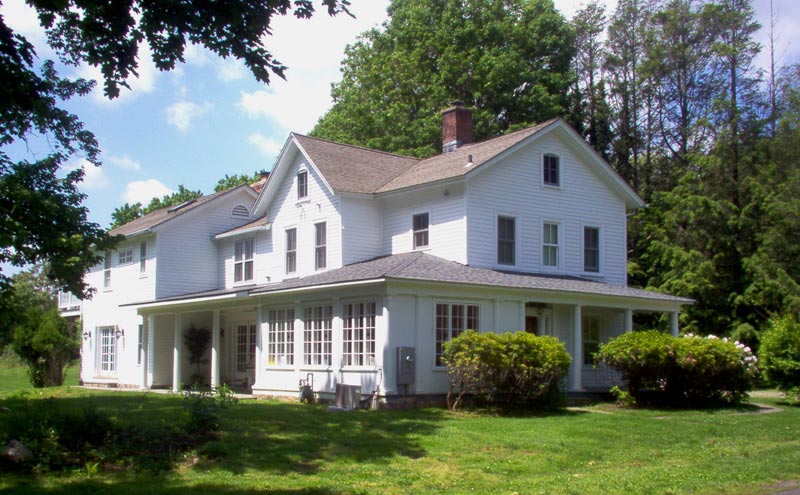
2010 before renovaiton
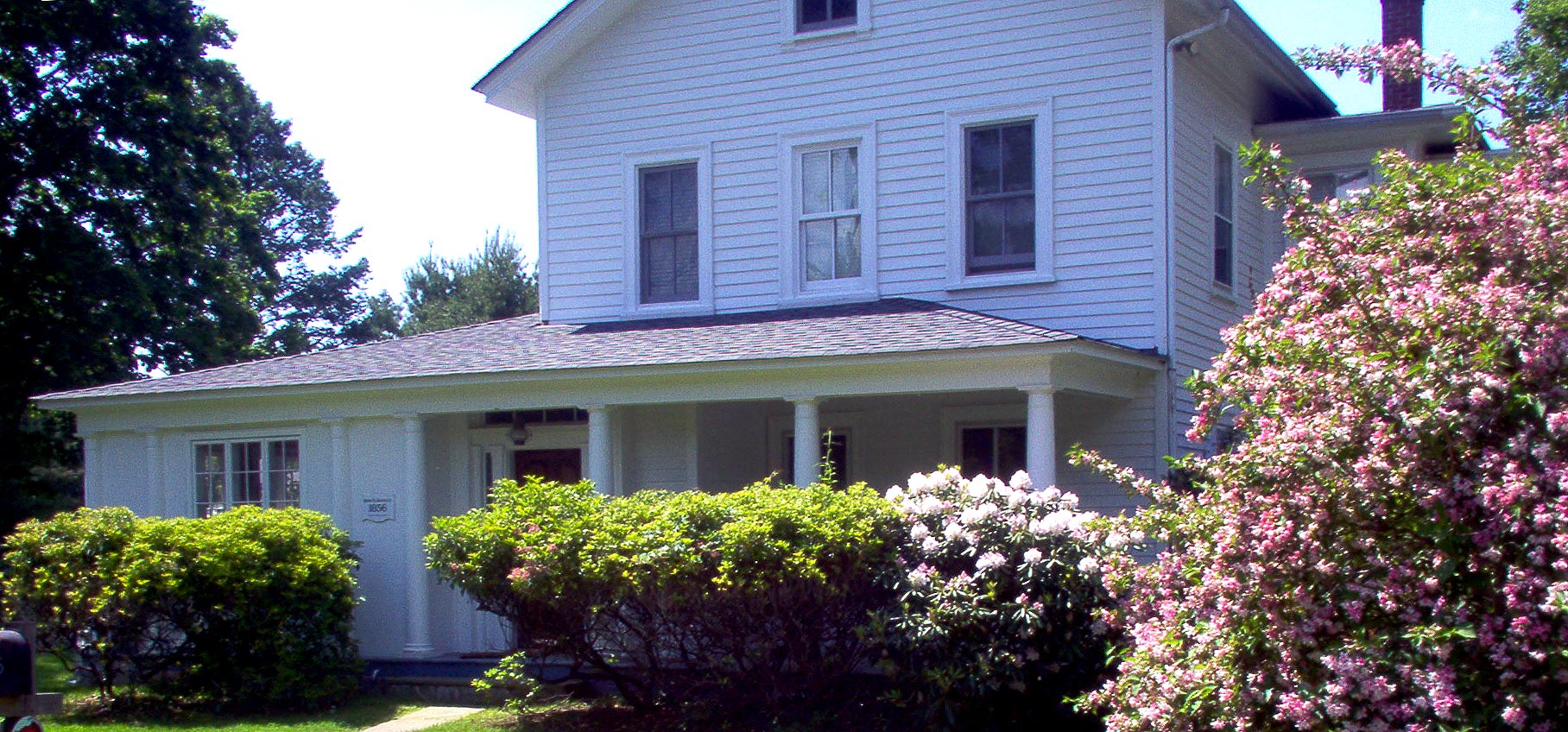
2010 before renovation



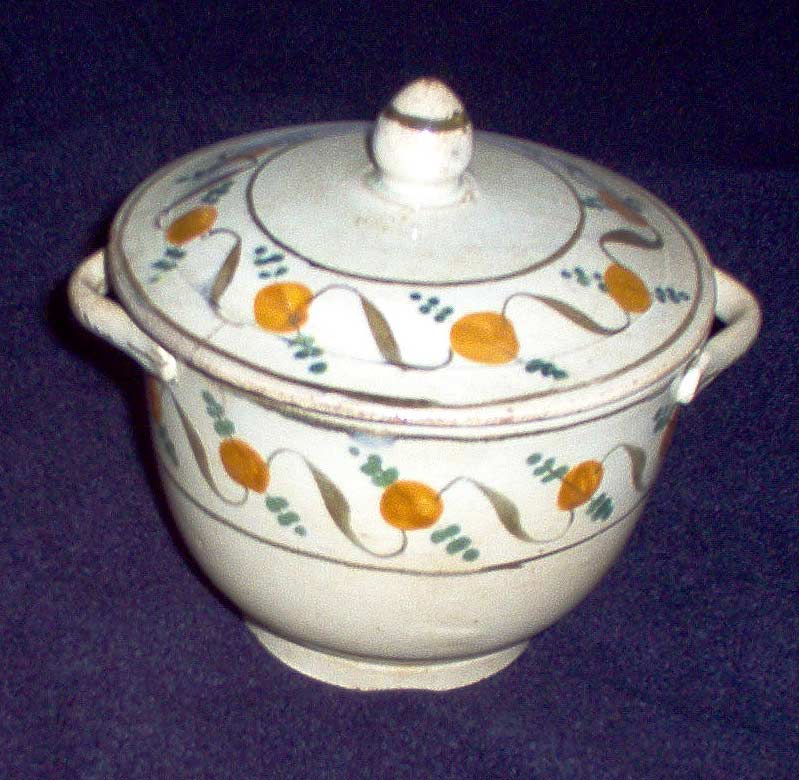
Mary Penfield sugar bowl
 
This was written by Alvin J. Northrop
Joshua Jennings, The First came to Greens Farms around 1645, from England, by way of Hartford Connecticut.
Various members of the Jennings families farmed the land from Dennies Point to Frost Point (Westport, CT) from 1645 to about 1910. The original settlers of Greens Farms were called the Bankside Farmers and farmed the land from Burial Hill to Frost Point.
Joshua Jennings, the second, was your great, great, great, great, great, great great grandfather. He was, in 1711, one of the seven founders of the Greens Farms Congregational Church. They left First Church Congregational in Fairfield so that they could have a church closer to their home lands. (I believe one or both Joshuas are buried in the Colonial cemetary in Greens farms off exit 18. ejn)
A.( Sasco Creek Road and Beachside closest to water} This is where your Great Great Grandfather Wakeman Jennings lived. He was married to Mary Penfield of Fairfield. The Penfield family ran the Sun Tavern (Just west of Town Hall, Fairfield). The Penfield family also ran the Penfield Grist Mill (on Ash Creek) which supplied the Continental Army with flour. Penfield Reef and Penfield Road are named after the Penfield Family.

B. (Sasco Creek Road just behind A.) This is where your Great Grandfather Lewis Burr Jennings lived. His wife was Mary Keeler of Ridgefield. Mary Keeler's father was Jeremiah Keeler of Ridgefield. The second child of Lewis Burr Jennings and Mary Keeler Jennings was Estella Keeler Jeiings. She married Georges Ives Northrop(son of George Elmore Northrop) (both George I. and George E. are buried at Oaklawn cemetary, Fairfield, Section A. ejn), and they were the parents of Alvin J., Margaret (I.) and Mary K. Northrop.
C.(other side of Sasco Creek Road behind where marsh is now) This was the home of Andrew Wakeman Jennings, whose father was Wakeman Jennings, and whose brother was Lewis Burr Jennings. This house later became the home of Little Orphan Annie comic strip artist, Harold Gray.
D. (corner of Long Lots Road and Sturges Road) This was where your Great Grandfather Alvin Northrop lived. He married Sarah Wakeman Alvord. Sarah Wakeman Alvord was the daughter of David Alvord and Abigail Jennings. David Alvord lived on the waterfront between burial Hill and Frost Point. This beach was called Alvord's beach.
E. Bulkley Avenue between Old Road and the Post Road, West side closer to Old Road)
This is where Mrs. Hannegan lived. Her daughter, Margaret Ellen Hannegan married George Elmore Northrop. He was the son of Alvin Northrop and Sarah Wakeman Alvord. George Elmore Northrop and Margaret Ellen Hannegan were married after his return from the Civil War (he enlisted at age 17) and they made their home on Pequot Avenue in Southport.
George Ives Northrop, your grandfather, was the son of George Elmore Northrop. He married Estella Keeler Jennings, daughter of Lewis Burr Jennings (was Annie Burr Jennings his sister? what about Oliver Burr Jennings). When they were first married they lived a 3 Seymour Street, South Norwalk. Their children were Alvin (Tom and Beth's father), Margaret and Mary.
F.(Beachside Road closer to Dennies point than Frost Point)This is where Wilbur Jennings lived. He was the son of Andrew Wakeman Jennings. This site later became the home of Eugene Henkels.
G. (Greens Farms Road)This was the home of Alphonso Jennings. His children were Florence and Bertram Jennings. When Alvin, Margaret and Mary were quite young, they used to plant corn for Cousin Florence and ride with her on her milk route in a Model T.
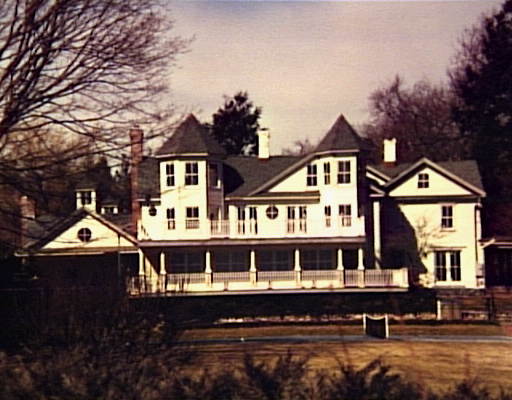
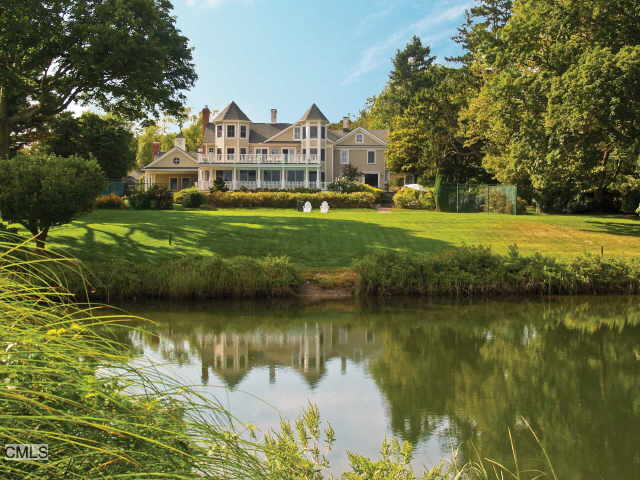

 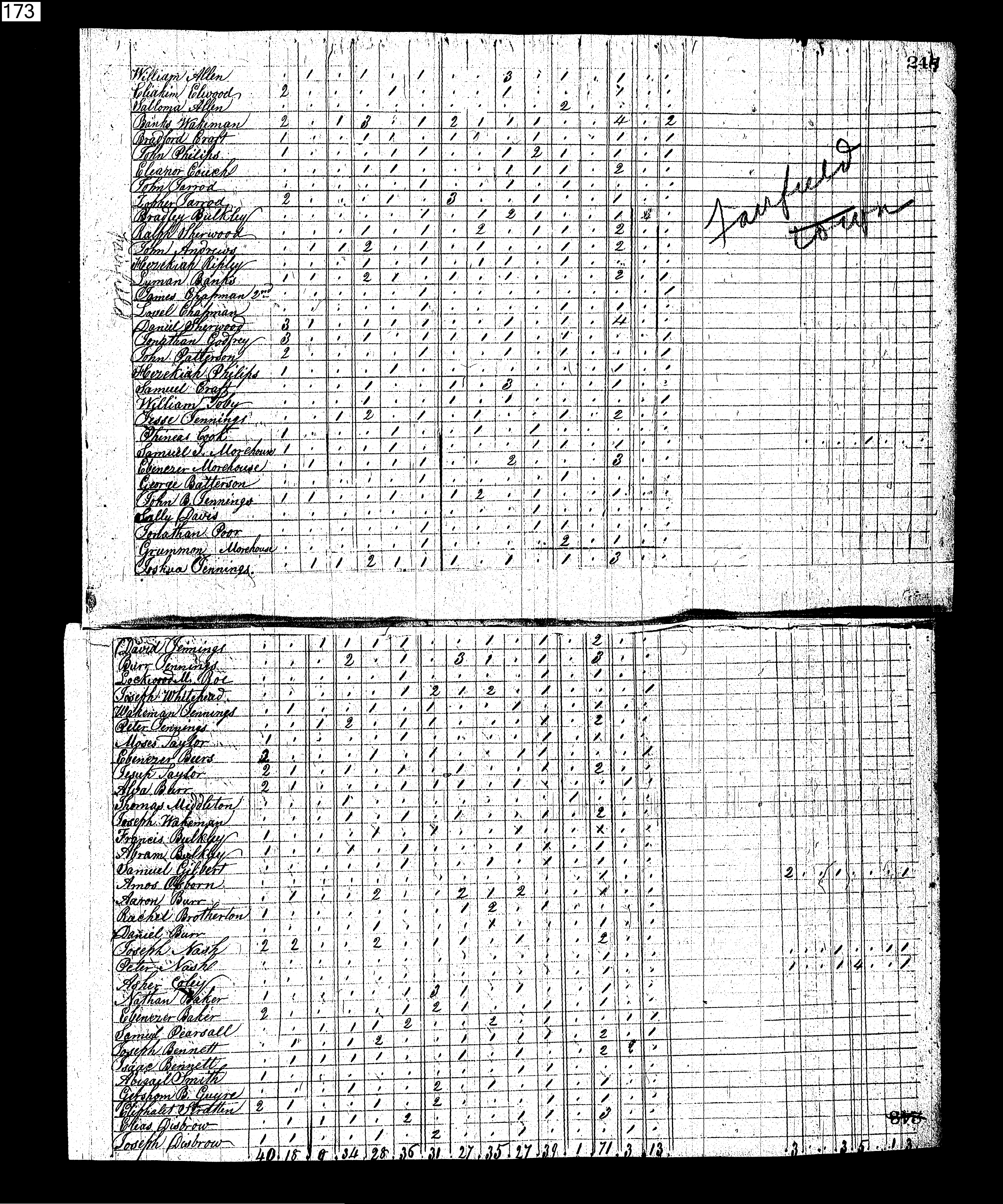
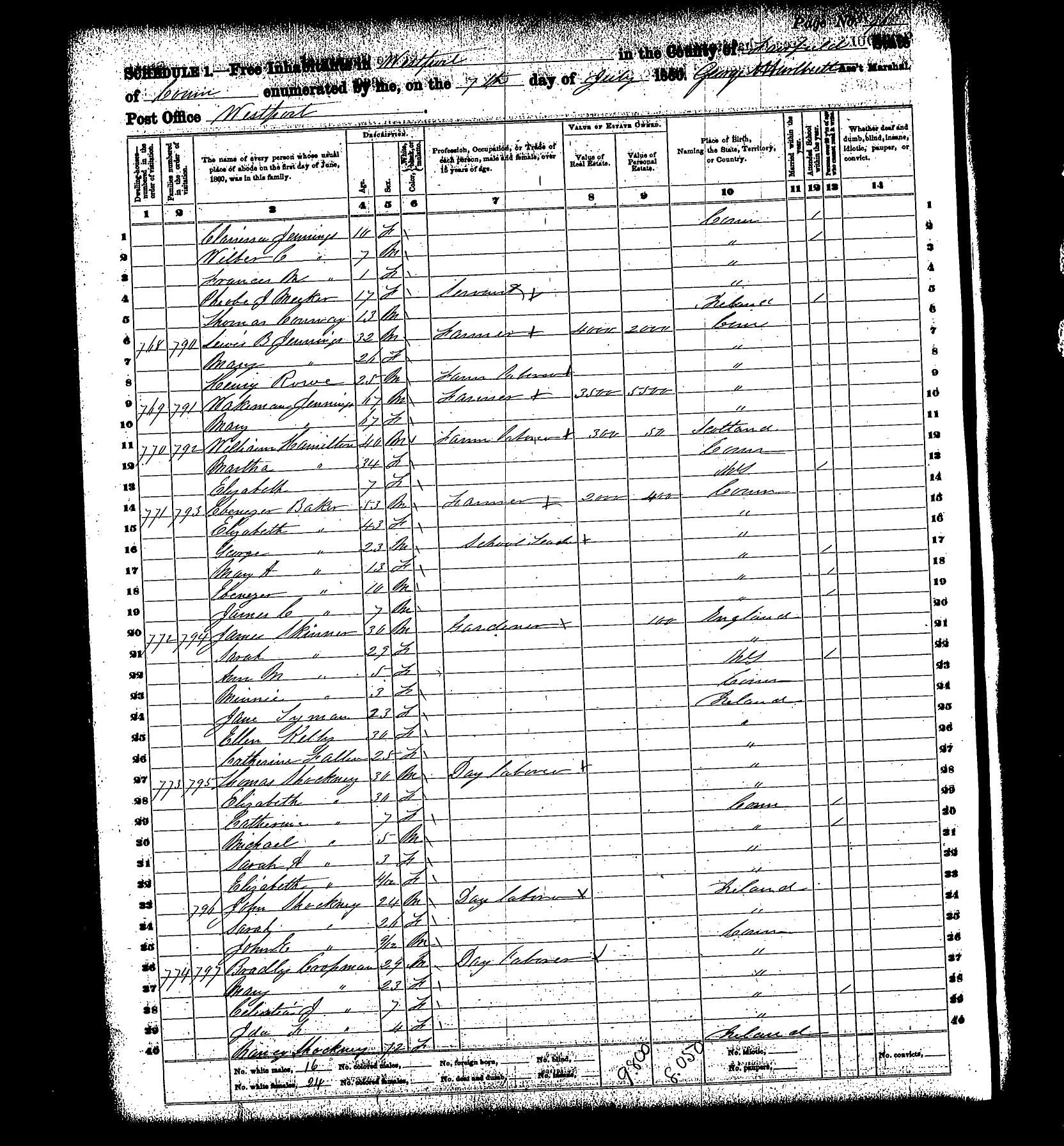
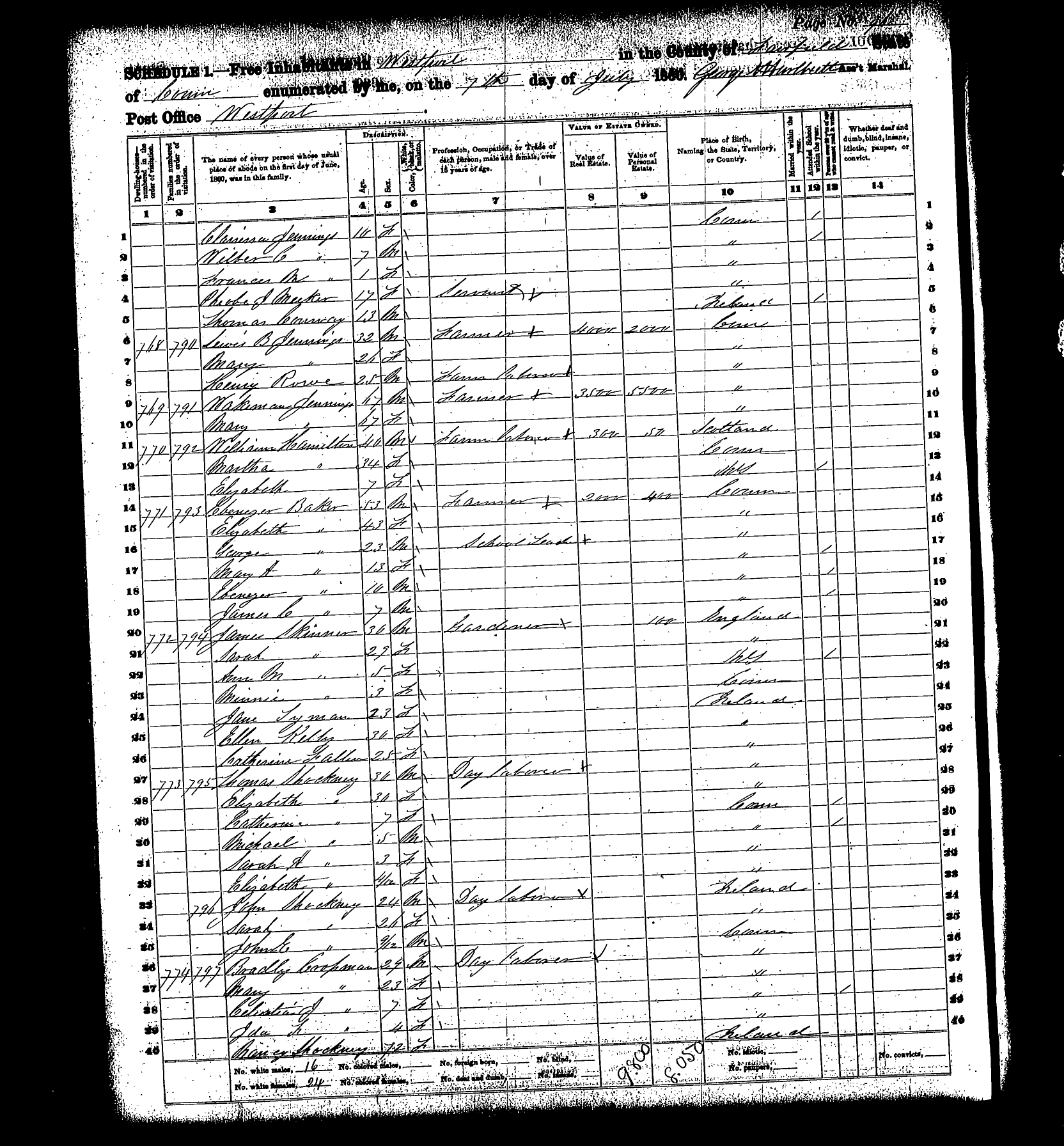

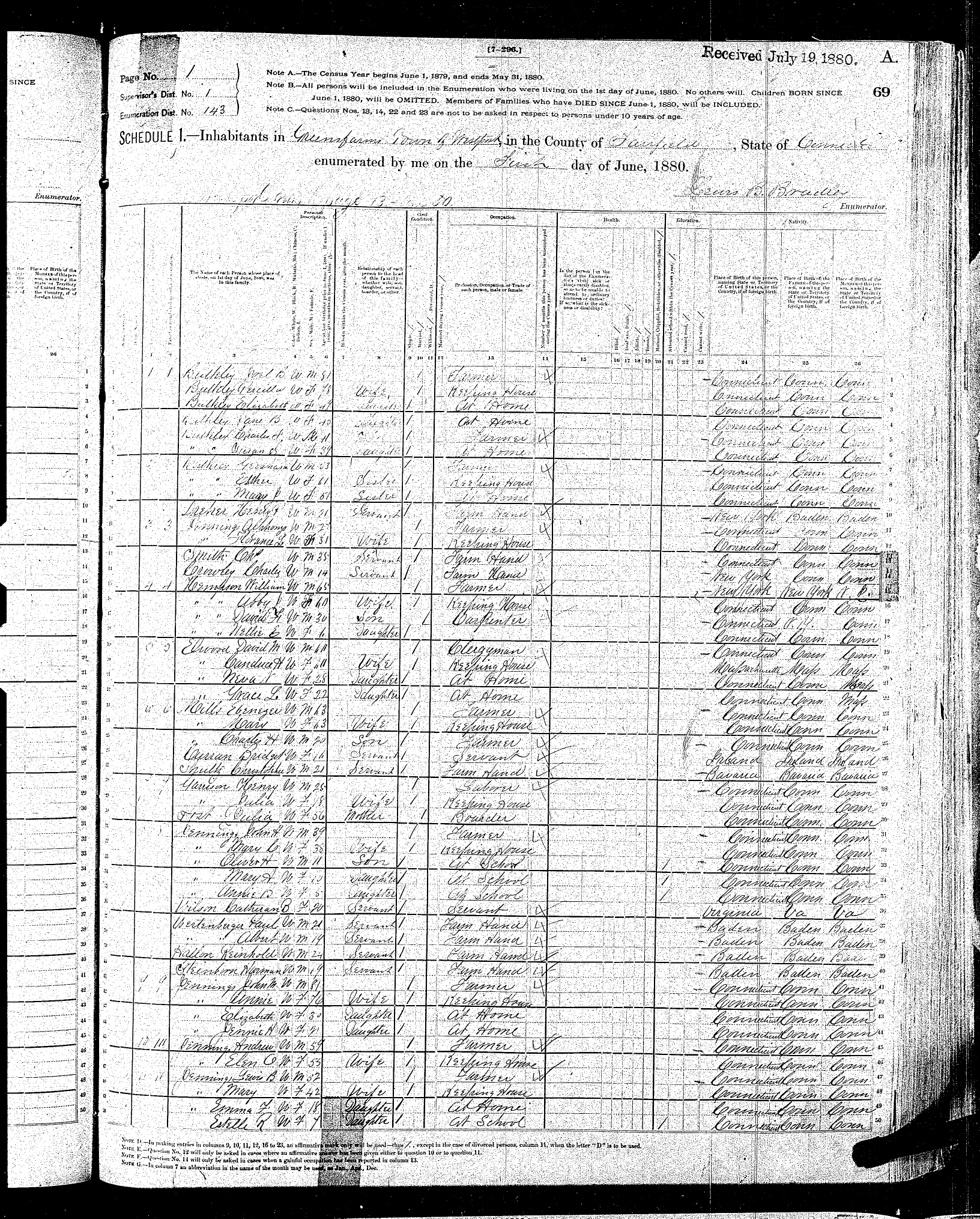
| |
|
|
John Jennings
Death: 1640 |
|
Rose Lisle
Death: UNKNOWN |
|
|
|
|
| |
|
|
Joshua Jennings
Birth: ABT 1620 England
Death: 1675 Fairfield, CT |
|
Mary Williams
Birth: ABT 1630 Stratford, CT
Death: DEC 1697 Fairfileld, CT |
|
|
|
|
| |
|
|
| Joshua Jennings 1Death: 1716 |
|
Hannah Lyon 1
Birth: ABT 1661
Death: NOV 1743 Westport, CT |
|
|
|
|
| |
|
|
Joshua Jennings 1Birth: ABT 1686Death: 1746 Fairfield, CT
Death: 2 JAN 1745/46 Fairfield, CT |
|
Sarah Bulkeley 1Birth: 1694
Death: 17 SEP 1724 Fairfield, CT
Death: 17 SEP 1724 |
|
|
|
|
| |
|
|
Joshua Jennings 1Birth: Greensfarms, CT
Birth: ABT 1727Death: 1 FEB 1818 Westport, CT
m. 12/24/1754 |
|
Spouse Unknown
POSSIBILY Esther Burr d/o Peter
Birth: 29 Nov 1734
Death: 12 Mar 1819 in Westport Connecticut
OR
Ellen Esther Burr
Birth: 1734 in bpt 11/29/1734 Redding, Connecticut
Death: 12 May 1819 in Westport, Connecticut |
|
|
|
|
| David J. Jennings * brother of Peter 1755 |
|
Joshua Jennings
Birth: 1/11/1762 Death:1/26/1839 |
|
Aaron Jennings
Birth
Death: |
|
Peter Jennings
Birth: 9 SEP 1764Death: 5 MAY 1841 |
|
Sarah (Sally) WakemanBirth: 4 FEB 1773
Death: 13 JUL 1857 |
|
Burr Jennings
Birth
Death: |
|
Abigail Jennings
Birth
Death: |
|
Ebenezer Jennings
Birth
Death: |
Morehouse Jennings
Birth
Death: |
|
Wakeman Burr Jennings
B 4/12/1793 Greens Farms
D 10/28/1867 Greens Farms |
|
|
|
|
|
|
Jeremiah Keeler
B 8/7/1786 Ridgefield, CT
D 7/13/1861 Ridgefield, CT |
|
Hannah Smith (2nd wife) bur Titicus cemetery ridgefield Catherine is ggrandmother per emma note First? fm bible
B 3/10/1798 Norwalk, CT
March 29, 1787 per Emma Note
D 7/12/1870 Cheshire, CT
|
|
| |
|
|
Lewis Burr Jennings
B 2/18/1828 Westport, CT
D 7/15/1908 Westport, CT |
|
|
|
Mary Keeler Jennings
B 9/30/1833 Ridgefield, CT
D 5/30/1899 Westport, CT |
|
|
| |
|
|
|
Sylvester Penfield Jennings
B 12/5/1856 Greens Farms, CT
D 8/26/1859 CT
buried Fairfield East Cemetery |
Emma Frances Jennings
B Greens Farms, CT
D CT |
Alice May? Jennings
B
Oct 30, 1865
Greens Farms, CT
D 12/7/1868CT
bur ffld east cemetery |
Estella Keeler Jennings
B 6/19/1872 Greens Farms, CT
D 1/7/1910 Bridgeport, CT |
m. George Ives Nov 23, 1904 in Norwalk |
|
|
|
|
Amos Northrop + Rachel Ives |
|
| Alvin Northrop |
Sarah Wakeman Alvord |
George Elmore Northrop + Margaret Ellen Hannegan |
George Ives Northrop |
George Ives Northrop + Estella Keeler Jennings |
Alvin Jennings Northrop |
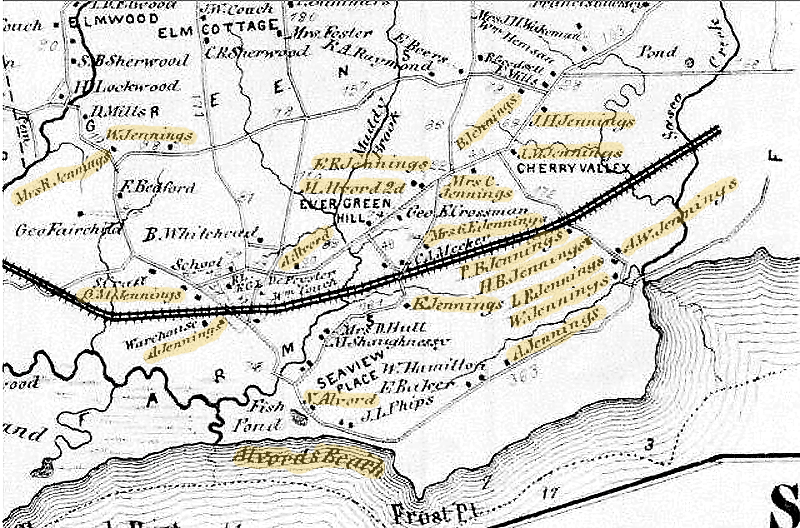
The heirs of Joshua Jennings I. for many years made fruitless efforts to establish a lawful claim to the vast estate of William Jennings of Acton Place, born in 1701 & who d. :9 June 1798, leaving estates in eleven counties in England, & millions in pounds sterling in nearly all the banks of London To establish such a claim, & to link the heirs of Joshua Jennings, who d. in 1675, with William Jennings of Acton place who d, in 1798, would be a remarkable undertaking. The property of this rich William Jennings was claimed in part, by the Baroness Howe, a daughter of the celebrated Admiral Howe, through a claim of intermarriage with the Jennings family with that of Curzens. The Earl Beuchamp (or Becham), also claimed heirship. Some clue in this way, may be given to Robert Beacham or Beuchamp of early Greens Farms. This William Jennings was the only child of Robert Jennens & Ann daughter & heir of Carew Guidott Esqr. of Hampshire, while Robert J. was the fifth son & heir of Humphrey Jennens, an iron master of Birmingham Eng. who married Mary Milward. This William Jennings was at one time a page to King William III, who was his godfather. He was also a nephew of Sarah Jennings, a maid of honor & the favorite of Queen Ann, who married the great Duke of Marlborough.
No record of the birth Joshua Jennings or of his parentage, has ever been found in England or Amerca.
|
|